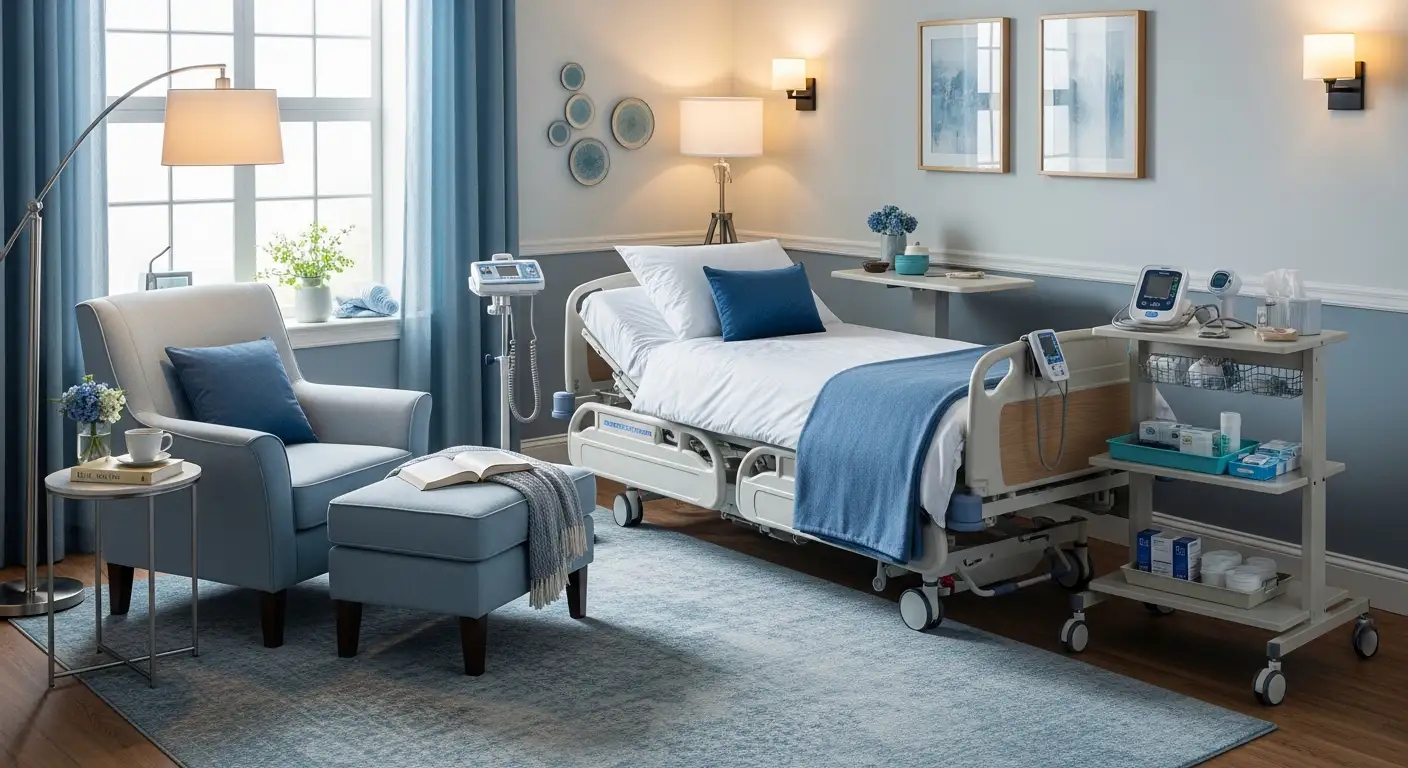Understanding the Foundation of a Successful Care Plan
Developing a comprehensive and effective care plan for Alzheimer’s patients living at home is essential for ensuring safety, comfort, and quality of life. It involves a person-centered approach that considers the individual's unique needs, preferences, and disease progression. This article explores the critical elements involved in creating, implementing, and maintaining an adaptable care plan tailored for in-home care, emphasizing safety, medical management, routines, behavioral strategies, and available resources.
Initial Assessment and Personalization of Care

How do you develop an effective care plan for an individual with Alzheimer's or dementia?
Developing a personalized care plan for someone with Alzheimer's or dementia starts with a detailed needs assessment. This involves gathering information about the individual’s physical health, cognitive abilities, emotional well-being, and daily routines. Collaboration with the care recipient, family members, and healthcare professionals ensures the plan addresses specific needs and preferences.
Setting clear, achievable goals is essential. These goals may include maintaining safety, promoting comfort, supporting independence, and enhancing quality of life. The plan should incorporate tailored routines that reflect their daily habits, safety measures, medication management, and engaging activities suited to their abilities.
Using person-centered approaches ensures the individual's personality, history, and preferences are prioritized. Digital tools like PASS (Personalized Alzheimer’s Support System) can help coordinate efforts and provide real-time updates for caregivers. Regular review and adjustments are vital as the disease progresses, accommodating changing needs and ensuring ongoing adequacy of care.
What are the key components of a comprehensive home care plan for Alzheimer's patients?
A thorough home care plan begins with an assessment of the person’s physical, mental, and emotional requirements, including safety and mobility. Key elements include:
| Component | Description | Additional Details |
|---|---|---|
| Personal and medical history | Collecting baseline health data and personal preferences | Critical for understanding past routines and current needs |
| Safety modifications | Implementing home adjustments to prevent falls and accidents | Installing grab bars, removing hazards, labeling rooms |
| Medication management | Ensuring proper medication routines | Using pill organizers, reminders, and regular reviews |
| Daily routines | Establishing consistent schedules for meals, hygiene, and activities | Supports stability and reduces confusion |
| Behavioral strategies | Techniques for managing agitation, wandering, or other behaviors | Non-pharmacologic interventions like music, familiar activities |
| Environmental adaptations | Creating a safe, calm environment | Using contrast, signage, and noise reduction |
| Support networks | Engaging family, caregivers, and community resources | Facilitates emotional support and respite |
| Ongoing evaluation | Regular reviews to adapt the plan | To match progression and changing needs |
Active participation by the individual and their support team ensures the plan remains effective and adaptable.
How can caregivers create a daily schedule that supports the needs of dementia patients?
Designing a daily schedule involves balancing structure with flexibility. Establish consistent routines for waking, meals, personal care, and bedtime, which provide predictability and comfort.
Include activities that promote cognitive stimulation, such as puzzles, music, or reading, tailored to the person’s interests and abilities. Physical activities like walking or gentle exercises support mobility and mood.
Timing activities during periods when the individual feels most alert increases engagement. For example, plan stimulating activities during peak energy times and relaxation or rest during low-energy periods.
Use simple, clear instructions and visual cues to assist with tasks like dressing or grooming. Encourage independence where possible, but be ready to step in with assistance.
Monitor responses to activities — if something causes agitation or confusion, adjust the approach. Maintaining a calm environment, managing sensory input, and ensuring safety measures are in place are crucial.
Regularly review and modify the routine to accommodate disease progression and changing interests, always prioritizing safety and well-being.
What safety considerations should be made when caring for someone with Alzheimer's at home?
Safety is a primary concern in home care. Start by assessing potential hazards: secure firearms, medications, cleaning supplies, and sharp objects. Install safety devices, including smoke detectors, carbon monoxide alarms, and fire extinguishers.
Make environmental modifications such as non-slip mats, handrails, good lighting across all rooms, and clear pathways. Use bright contrasting colors and visual cues to aid navigation.
Label doors, cabinets, and rooms with simple pictures or words to support recognition. Remove or pad furniture with sharp edges and secure or disable potential climbing or trapping hazards.
Adjust water heater temperature to 120°F to prevent burns. Use door alarms or GPS trackers to prevent wandering.
For bathroom safety, install grab bars, nonslip mats, and raised toilet seats. In the kitchen, place safety knob covers and avoid leaving hot or sharp items accessible.
Ensure emergency contacts and medical information are easily available. Regularly review safety measures and adapt as needs evolve.
What strategies can help manage behavioral challenges in dementia patients living at home?
Behavioral issues, such as agitation, wandering, or resistance, can be managed by creating a calm, predictable environment. Establish routines for daily activities to reduce uncertainty. Use familiar objects and maintain consistency.
Identify triggers like overstimulation, fatigue, or unmet needs; address these promptly—offer comfort, hydration, or a quiet environment.
Engage the individual in meaningful activities suited to their interests and abilities. Music therapy, art, and gentle physical activity can reduce agitation and improve mood.
Provide reassurance and emotional support through calm communication, validation, and patience. Avoid confrontation or correction, which may escalate behaviors.
Adjust environmental stimuli by controlling noise, bright lights, and distractions. Situational modifications and distraction techniques often help de-escalate behavioral episodes.
Seeking professional guidance for behavioral management and medication review is advisable if behaviors pose safety risks or significantly impact quality of life.
How should medical and health management be incorporated into a home care plan for dementia?
Effective health management involves regular monitoring of medication schedules, routine health assessments, and early intervention for health issues. Collaborate with healthcare providers to adjust medications as needed and to manage comorbid conditions.
Establish daily routines for personal hygiene, nutrition, and physical activity that promote overall health. Keep detailed medical records, including current prescriptions, allergies, and recent health concerns.
Schedule regular check-ups and coordinate with specialists for ongoing management. Educate caregivers and family members about symptoms to watch for and when to seek urgent care.
Incorporate non-pharmacologic strategies—such as diet, hydration, physical activity, and cognitive engagement—to support physical and mental health.
Adjust routines based on the individual's disease stage, energy levels, and preferences. Use digital care management tools for tracking and updating health data.
What resources are available to support home-based dementia care?
There is a broad range of resources to assist caregivers and individuals with dementia at home:
- Community support groups and education programs.
- Respite care services for temporary relief.
- Home health care agencies offering nursing, therapy, and personal care.
- Home modifications from specialized contractors to improve safety.
- Legal and financial planning assistance, including powers of attorney and advance directives.
- Emergency alert systems and medical alert jewelry for safety.
- Online platforms like Eleplan for organizing and sharing care plans.
- Government programs such as adult day care, transportation services, and financial benefits.
Utilizing these resources ensures comprehensive support and helps maintain quality of life.
What legal and ethical considerations should be taken into account when planning care for someone with Alzheimer's?
Legal considerations include early advance directives, durable powers of attorney for health and finances, and guardianship arrangements, ideally completed early while the individual retains decision-making capacity.
Ethically, respecting the person’s autonomy, dignity, and preferences is paramount. Transparent communication and honest discussions about prognosis and care options are essential.
Healthcare providers should support the individual’s wishes, including end-of-life care preferences, and promote shared decision-making among family and care teams.
Regularly review legal documents and adjust according to changing health status and preferences. Ensuring informed consent and protecting against elder abuse are vital.
Involving loved ones in care planning, with appropriate legal guidance, safeguards the individual’s rights and promotes ethical caregiving.
What are the typical stages of dementia and the corresponding care strategies?
Dementia progresses through early, middle, and late stages, each requiring tailored care approaches.
Early Stage: Mild memory issues, difficulty with word-finding, and subtle confusion. Care strategies focus on supporting independence, safety planning, and establishing routines. Middle Stage: Increased forgetfulness, behavioral changes, dependence on caregivers for daily tasks, and difficulty managing finances or medications. Care includes assistance with personal care, environment safety, behavioral management, and emotional support. Late Stage: Severe cognitive decline, physical impairments, and dependence for all activities of daily living. Care involves 24-hour support, comfort-focused measures, and minimizing discomfort.
Throughout all stages, ongoing assessment, flexibility in routines, and compassionate communication are fundamental to providing dignity and quality of life.
Adjustments in care strategies as symptoms evolve help optimize safety, health, and emotional well-being for individuals with dementia.
Creating Safe Environments and Managing Risks

What safety considerations should be made when caring for someone with Alzheimer's at home?
When caring for a loved one with Alzheimer's at home, safety must be a priority to prevent accidents and manage navigation challenges. An essential step is conducting a thorough home safety assessment to identify potential hazards. This includes securing or removing sharp objects, heavy furniture, or items that could cause injury if mishandled.
Locking away medications, chemicals, and other potentially dangerous supplies helps prevent poisoning or accidental ingestion. Installing safety devices like smoke detectors, carbon monoxide alarms, and grab bars in bathrooms adds layers of protection. Proper lighting along stairways, hallways, and walkways reduces the risk of trips and falls, especially during nighttime.
Adjusting water heater temperatures to safe levels, cushioning sharp furniture edges, and using non-slip mats in bathrooms and kitchens further enhance safety. Establishing consistent routines and using visual cues like signs or pictures aid in orientation and reduce confusion. Keeping emergency contact details current and easily accessible is crucial for quick response during emergencies. All these measures work collectively to support independence while minimizing risks.
How can home modifications reduce safety risks for dementia patients?
Home modifications are instrumental in creating a secure and supportive environment for dementia patients. Installing safety latches on cabinets and doors prevents access to hazards such as cleaning supplies or sharp tools. Nightlights or motion-activated lighting improve visibility after dark and help prevent falls.
Applying contrasting colors or decals on stairs, doorways, and steps can improve depth perception and aid navigation. Labeling rooms with simple signs or pictures helps individuals recognize and find their way around more easily, reducing anxiety and disorientation.
Removing or securing rugs, loose carpets, and furniture that could cause tripping is vital. Adjustments like setting the water heater to a safe temperature (below 120°F), fitting slip-proof mats in bathrooms, and installing grab bars and raised toilet seats help prevent common accidents.
Regular safety checks and updates ensure that the environment adapts to the disease’s progression, maintaining safety as needs change. Thoughtful modifications not only prevent injuries but also promote a greater sense of independence and confidence for the person with dementia.
Assistive devices
Using assistive devices can significantly enhance safety and quality of life. These include:
- Mobility aids: Walkers, canes, and wheelchairs support safe movement.
- Monitoring systems: Bed alarms, motion sensors, and GPS trackers help caregivers keep track of loved ones’ whereabouts.
- Communication tools: Hearing aids, picture boards, and electronic reminders aid in maintaining effective communication.
- Safety gadgets: Stove shut-off devices, stove alarms, and automatic door locks are designed to prevent accidents.
Incorporating appropriate assistive devices into the home environment complements modifications and routines, creating a safer space for those with Alzheimer’s.
| Aspect | Modifications/Safety Measures | Benefits |
|---|---|---|
| Home Safety Assessments | Professional evaluations, hazard identification | Personalized safety plan |
| Environmental Modifications | Lighting, color contrast, grab bars, latches, signage | Fall prevention, better orientation |
| Assistive Devices | Mobility aids, monitoring systems, safety gadgets | Enhanced safety, independence |
Applying these strategies ensures a comprehensive approach to managing safety risks, helping loved ones live more comfortably and securely at home.
Supporting Caregivers and Families

How should medical and health management be incorporated into a home care plan for dementia?
Incorporating medical and health management in a dementia home care plan involves meticulous coordination of healthcare needs. Regular medication management is vital, ensuring that prescriptions are up-to-date and administered correctly. Routine health monitoring includes tracking vital signs, managing chronic conditions, and scheduling consistent medical appointments for comprehensive evaluations. Caregivers should work closely with healthcare providers to adapt treatment plans as the disease progresses and new symptoms emerge. This collaboration ensures timely interventions, medication adjustments, and proper management of comorbidities. Besides medical strategies, establishing structured daily routines enhances overall well-being. These routines include personal hygiene, nutritious meals, physical activity, and social and cognitive engagement, all of which should remain flexible to accommodate spontaneous activities and individual preferences. Caregiver education is also crucial; they should learn about safety precautions, symptom control, and resource availability, such as support groups and professional healthcare guidance. This comprehensive approach supports the person with dementia’s health and improves caregivers’ confidence and effectiveness.
What resources are available to support home-based dementia care?
Numerous resources are available to assist those providing care at home for individuals with dementia. Community programs such as caregiver education sessions, support groups, and day centers offer direct assistance and emotional support. Respite services are crucial—they provide temporary relief, allowing caregivers to rest and recharge. Licensed home health professionals can deliver medical care, including nursing services, medication administration, and physical therapy, tailored to individual needs. Home modifications and assistive devices further promote safety and independence. These include safety alarms, mobility aids, non-slip mats, and environmental adaptations that reduce fall risks. Legal and financial planning tools are vital for safeguarding the person's future, helping with estate planning, power of attorney, and advance directives. Additional support comes from helplines, online educational resources, and local or federal programs that offer benefits, counseling, and opportunities for participation in research studies. Utilizing these resources ensures comprehensive support for both the person with dementia and their caregivers.
What legal and ethical considerations should be taken into account when planning care for someone with Alzheimer's?
Legal and ethical considerations form an essential part of effective dementia care planning. Early legal actions like establishing advance directives and durable powers of attorney help ensure the person's preferences are respected throughout disease progression. Assessing the individual's capacity to understand and sign legal documents is crucial; this process often requires thorough, professional evaluations. From an ethical standpoint, promoting autonomy as long as possible is fundamental, even as decision-making abilities decline. Open, honest communication about diagnosis and prognosis fosters trust and supports informed choices. Healthcare providers should prioritize compassionate care, avoiding unnecessary invasive treatments or restraints, and emphasizing comfort and dignity. End-of-life planning involves discussing preferences for palliative care and ensuring legal documents are current and reflect the person's wishes. Family involvement must balance respect for the patient's rights with the need to protect their well-being. In summary, integrating legal safeguards and ethical principles ensures that care respects the individual's dignity, rights, and personal values, guiding caregivers through complex decisions and promoting quality of life.
Moving Forward with Compassionate Care
Creating a comprehensive and flexible care plan for Alzheimer’s patients at home is vital for supporting their safety, health, and emotional well-being. Regular assessments, personalized routines, safety modifications, and ongoing collaboration among family, healthcare providers, and community resources all contribute to a successful care strategy. Caregivers should continue to educate themselves, utilize available resources, and adapt the plan as the disease advances. With a thoughtful, person-centered approach, families can ensure that their loved ones live with dignity and comfort in the familiar environment of home for as long as possible.
References
- Daily Care Plan
- Developing a Dementia Care Plan
- Steps for Creating and Maintaining a Care Plan | Caregiving
- Creating a dementia care plan
- In-Home Care
- How to Create a Checklist and Daily Care Plan for Dementia
- Dementia Care: Keeping Loved Ones Safe and Happy at ...
- How to Create a Dementia Care Plan for Your Loved One
- Dementia Care at Home



